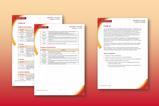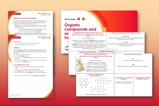How do we overcome the challenges of reducing our world’s reliance on coal and oil?

If you take a materials science class at Swansea University you might find yourself staring at the wall. Not because you’re bored, but because these classes often take place in the university’s Active Classroom, where the walls – and the roof and windows – generate more energy than the classroom needs for heating and electricity, making the building completely self-sustaining and saving nearly £900 a year.
The students in our classrooms, as the next generation of scientists, will be responsible for developing new technologies that will eventually replace our dependence on fossil fuels. This article describes some different ways in which communities across Europe are already starting to approach this challenge, and considers the advantages and disadvantages of each.
This article is perfect for sharing with students, showing them the importance of chemistry in a wider context.
This unique classroom is made from materials that convert the energy in sunlight into heat and electricity. The roof is made from steel containing thin copper indium gallium selenide solar cells. Peter Holliman, a chemist at the university, explains that rather than the solar panels being bolted on, they’re part of the roof panels themselves: ‘They are integrated into each other.’ The plan is to build this technology into an entire housing estate.
This unique classroom is made from materials that convert the energy in sunlight into heat and electricity. The roof is made from steel containing thin copper indium gallium selenide solar cells. Peter Holliman, a chemist at the university, explains that rather than the solar panels being bolted on, they’re part of the roof panels themselves: ‘They are integrated into each other.’ The plan is to build this technology into an entire housing estat.(bit.ly/2X4XStN).
In Wolfhagen, Germany, the community has taken the idea of becoming self-sustaining to the next level. As well as having its own solar park and wind turbines, the town is home to a facility where farm wastes are used to produce biogas for heating the local swimming pool and school. Wolfhagen aims to power itself by renewable energies alone.
In Wolfhagen, Germany, the community has taken the idea of becoming self-sustaining to the next level. As well as having its own solar park and wind turbines, the town is home to a facility where farm wastes are used to produce biogas for heating the local swimming pool and school. Wolfhagen aims to power itself by renewable energies alone (bit.ly/2DGMLOw).
Making solar cells thin and flexible enough to be integrated into buildings is just one of the ways scientists are trying to help reduce our reliance on fossil fuels. Even if all buildings were as sustainable as the Active Classroom, it wouldn’t be enough to supply all the world’s energy needs, not least because there are currently more than a billion, mostly petrol-fuelled, cars on the roads. The transition from fossil fuels to renewable energy will require a mixture of different green technologies to generate, store and transport energy.
Meeting challenges
It’s not clear what the future energy mix is going to look like and scientists working on the individual technologies face many challenges.
Some of the most promising new materials for making thin, flexible solar panels are compounds called perovskites. They are cheap to make because the chemicals are so widely available but, as Peter explains, while these materials may generate renewable electricity they’re not necessarily green: ‘There’s lead in them, so researchers are spending a lot of time looking for alternatives to lead in perovskites.’
Classroom activity: A hydrogen economy
Worksheet for age range 16–18
In this worksheet students compare the two ways in which hydrogen can be used as an alternative energy source to fossil fuels; in an internal combustion engine or in a hydrogen fuel cell. The topic provides an excellent opportunity for students to apply their understanding of energetics and redox equilibria in a relevant context.
Wind turbines, meanwhile, have always divided communities – some consider them unsightly while others argue that they kill too many birds. In Wolfhagen, there were protests about the location of the wind turbines due to concerns about their impact on local wildlife.
A common complaint about solar and wind is that they are too unreliable because they depend on the weather. For a constant supply of energy that we can switch on and off or move around, we need a way of storing it. That could mean rechargeable lithium-ion batteries, as in an electric car, or sustainable batteries that use saltwater as an electrolyte, like in the Active Classroom. Or it could mean something else completely, like hydrogen.
Harnessing hydrogen
Hydrogen is not considered a fuel like oil or coal. Tim Mays, a hydrogen specialist at the University of Bath explains: ’it’s an energy carrier or ‘vector’.’ That means you can use it to move energy around, like a battery, but unlike a battery, there’s no recharging. A hydrogen-powered car has a tank that gets filled with hydrogen gas, and the energy comes from reacting the hydrogen with oxygen, producing only water as a by-product. Though, Tim says, you’ll have to drive a long way to find a hydrogen station right now: ‘We don’t have an infrastructure of gas stations for hydrogen yet.’
Whether it’s by changing the way we run the national grid, or going off-grid completely, there are many ways to make the transition
Tim is working on one of the big challenges for hydrogen: how to store the gas safely without using expensive materials like carbon fibre. For transport uses, hydrogen is stored at 700 bar of pressure – about 350 times the pressure of a car tyre. Tim’s research focuses on materials called metal–organic frameworks that act like compressors. ‘We call them chemical sponges,’ he explains. ‘They have lots and lots of very small pores inside them and they suck up the hydrogen.’ These materials can pack the gas in more densely than in a 700 bar tank.
While hydrogen is often made unsustainably it can also be produced by electrolysis or ‘splitting’ of water using electricity generated from renewable sources. Researchers have been developing solar water splitters for many years. This could solve the problem of intermittent supply, by providing a way to store excess energy from the grid.
Whether it’s by changing the way we run the national grid, or going off-grid completely, there are many ways to make the transition. One bonus will surely be more local power production. Today in the EU, we import more than half of our energy from abroad. Imagine a future where we run our homes off the solar cells integrated into our windows and roofs and store the excess in hydrogen canisters that we use to fill up our cars.
Article by Hayley Bennett, a science writer based in Bristol. Resource by Catherine Smith, a secondary school teacher in Leicestershire.
More recommended resources
Discover more about the Wolfhagen transition: read the chapter Klimafesten by E Mollenbach, K Hornboek, in Community Governance and Citizen-Driven Initiatives in Climate Change Mitigation, Routledge 2015
Students can make a sample of biodiesel using the method described in this resource and discover how cars can run on a mixture of diesel and reused vegetable oil in this short video.
In this collection of video clips from the RI Christmas Lectures 2012, students can see how hydrogen can be produced from water and then used in a hydrogen fuel cell to power vehicles.
By making this microscale Hoffman voltameter (CLEAPSS log in required), teachers can demonstrate the breakdown of water into hydrogen and oxygen in a 2:1 ratio and then recombine the gases with a spectacular ‘sharp crack’ to illustrate the amount of energy the reaction produces.
The Redox Equilibria chapter of the Advanced starters for ten collection has short in-class activities students can use to test their understanding of electrode potentials and redox equilibria.
Discover more about the Wolfhagen transition: read the chapter Klimafesten by E Mollenbach, K Hornboek, in Community Governance and Citizen-Driven Initiatives in Climate Change Mitigation, Routledge 2015
Students can make a sample of biodiesel using the method described on Learn Chemistry – rsc.li/2Bz72Fw – and discover how cars can run on a mixture of diesel and reused vegetable oil in this short video: rsc.li/2GIKBB6.
In this collection of video clips from the RI Christmas Lectures 2012, students can see how hydrogen can be produced from water and then used in a hydrogen fuel cell to power vehicles – rsc.li/2Sy0lhn
By making this microscale Hoffman voltameter, teachers can demonstrate the breakdown of water into hydrogen and oxygen in a 2:1 ratio and then recombine the gases with a spectacular ‘sharp crack’ to illustrate the amount of energy the reaction produces: bit.ly/2I8wh7k (CLEAPSS log in required).
The Redox Equilibria chapter of the Advanced starters for ten collection has short in-class activities students can use to test their understanding of electrode potentials and redox equilibria: rsc.li/2E9mjhU.
Downloads
Worksheet: A hydrogen economy
Word, Size 0.25 mbWorksheet: A hydrogen economy
PDF, Size 0.13 mb




















No comments yet